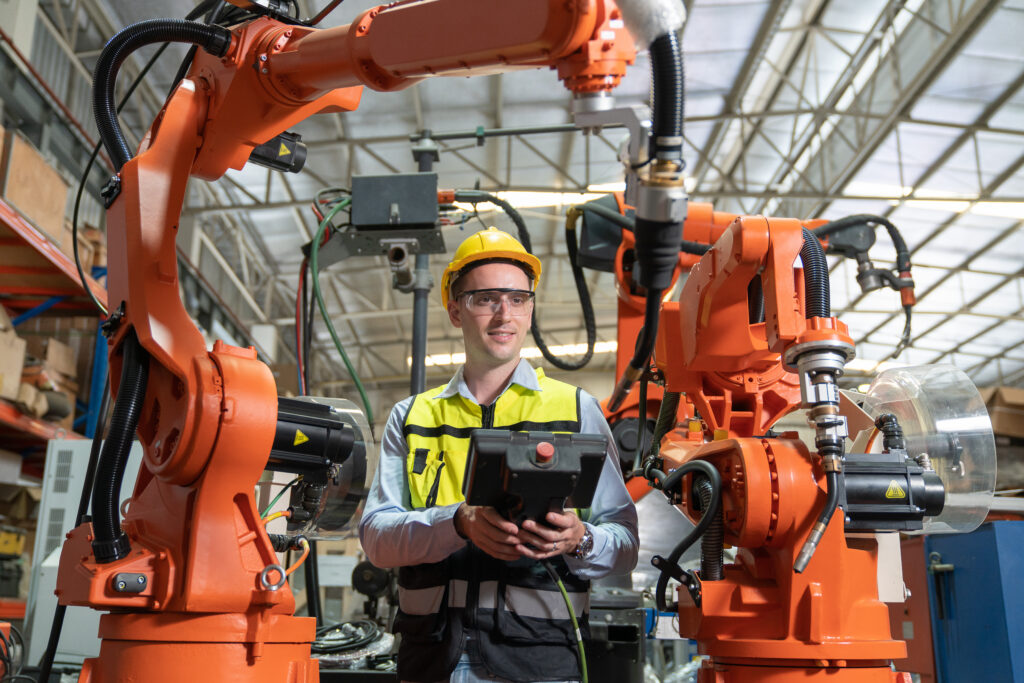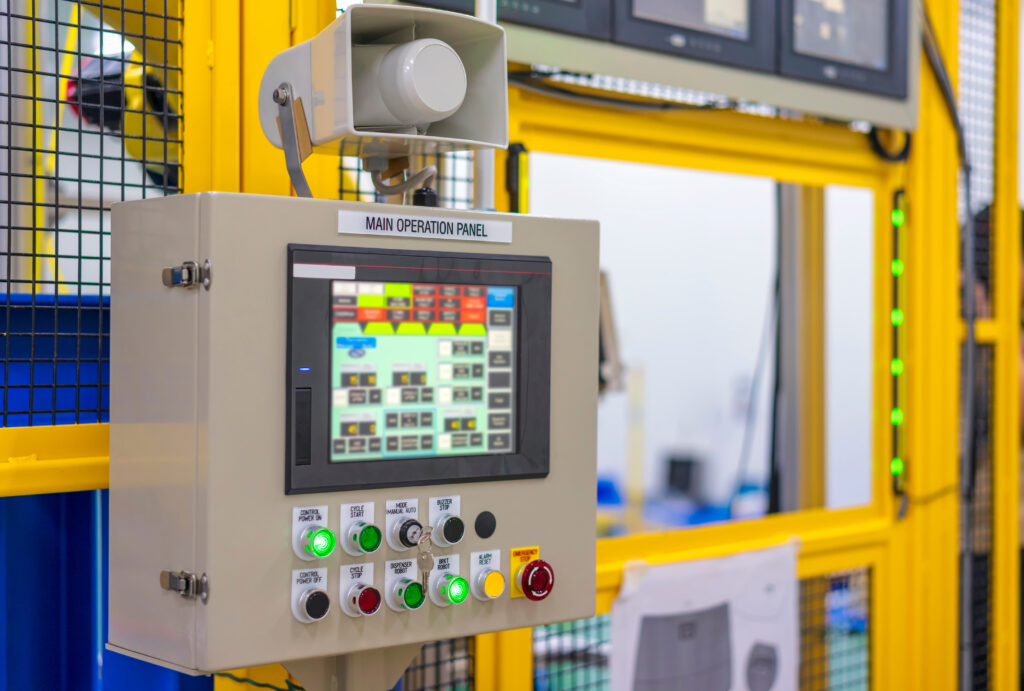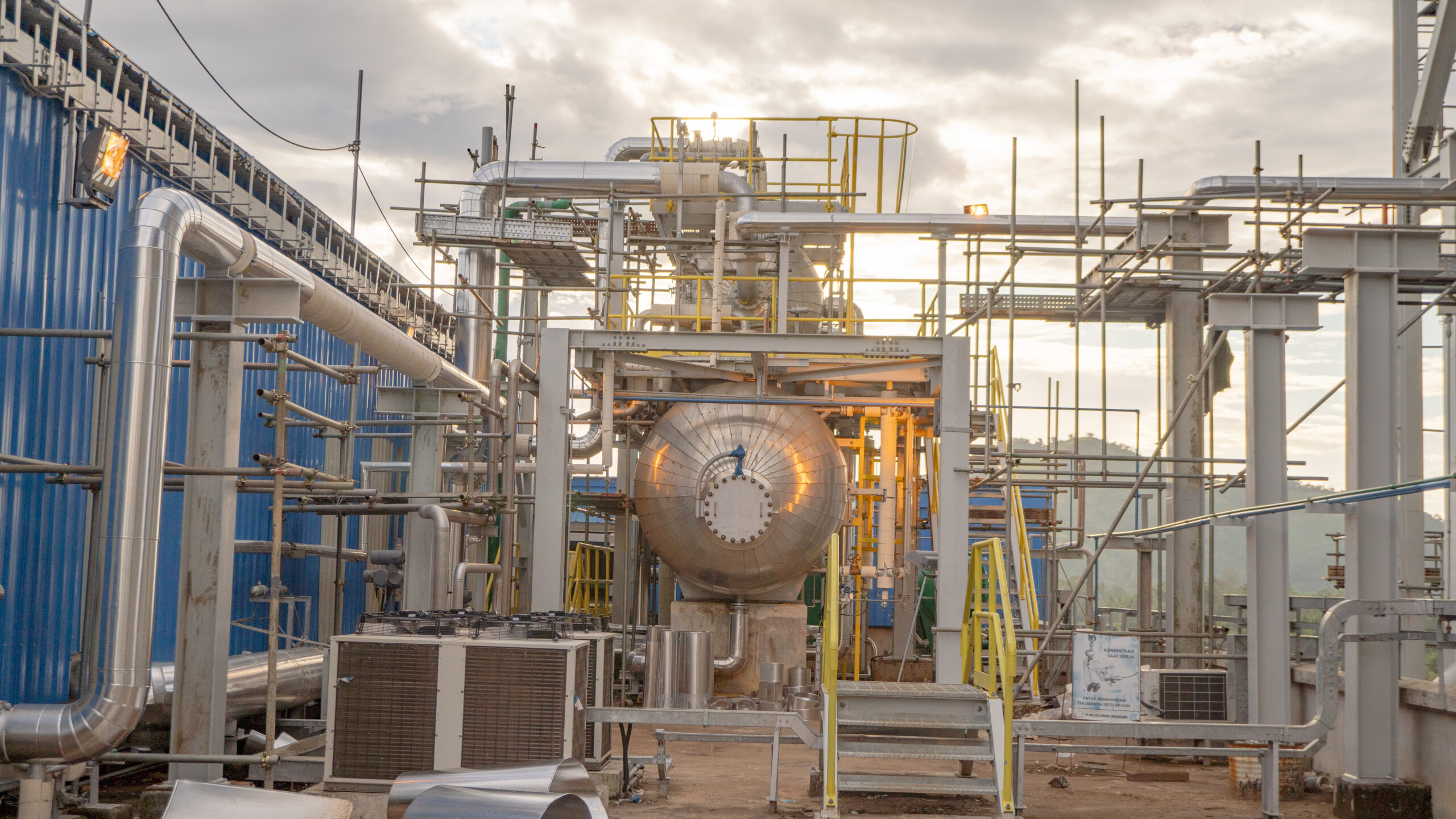Industrial Automation
Comprehensive industrial automation services
Industrial Automation
Industrial automation boosts throughput, precision and workplace safety. PLC and SCADA control systems let you monitor and manage processes in real time, cutting downtime and error rates. Whether you need to modernise legacy equipment or integrate new technology, we tailor each solution to your plant’s specific needs—improving competitiveness and production flexibility.
Our offer
Control-system design – We create and implement PLC, SCADA and HMI platforms tailored to your production needs.
System integration – We connect disparate automation islands into one coherent, data-driven process-management system.
Machine modernisation – We retrofit older machines and lines to meet current technical and safety standards.
Safety systems – We design and build safety solutions fully compliant with European regulations.
Service & support – We provide routine maintenance and technical support for installed automation systems.

Our approach to automation
In industrial automation, success is not just about selecting the right technology—it is equally about integrating it with existing processes. Our engineers analyse every production line and customise solutions to the specific requirements of each plant. This lets us deliver:
Reduced downtime – Our solutions are designed to minimise failure risk and keep production running continuously.
Greater production flexibility – Advanced automation systems allow lines to adjust quickly to changing market demands.
Seamless integration of new systems with existing infrastructure – Technologies such as SCADA and PLC provide smooth connections across all stages of production.
What does industrial automation and I&C cover?
Industrial automation is a collection of control systems that keep production processes running smoothly. Key building blocks include:
Safety systems – Light curtains, emergency stops and other protective devices safeguard operators and machines. For a full compliance roadmap, visit machinery safety assessment.
System integration – Automation thrives on fast, reliable communication between devices. Industrial networks let you monitor and control machines in real time. See our custom automation solutions for typical integration scenarios.
PLC & SCADA control systems – These platforms command and supervise production, automate operations and trigger rapid responses to disturbances. Learn more in our deep-dive on PLC programming.
Instrumentation & Control (I&C) – Sensors, transmitters and controllers keep critical parameters such as temperature, pressure and level within safe limits, ensuring product quality and process stability.
Drives & motion control – Variable-frequency drives and servo systems regulate motor speed and torque with high precision, directly affecting overall line productivity.

Sterowniki, systemy zrobotyzowane i aparatura AKPiA
W Engineering Shield współpracujemy z uznanymi producentami systemów sterowania, robotyki oraz aparatury kontrolno-pomiarowej, co pozwala nam dostarczać niezawodne i precyzyjne rozwiązania.
| Kategoria | Producenci |
|---|---|
| PLC controllers | Siemens (Simatic S7), Allen-Bradley (Rockwell Automation), Schneider Electric (Modicon), Omron, Mitsubishi Electric |
| Robotic systems | ABB, FANUC, KUKA, Kawasaki |
| I&C: sensors & encoders | SICK, IFM, TURCK, Pepperl+Fuchs, Balluff |
| Pneumatics | Metalwork, Festo, SMC |
| Industrial networks & protocols | Profinet, Modbus, Ethernet/IP |
| Vision systems | Cognex, Keyence |
1
Higher throughput & lower costs
2
Consistent quality & precision
3
Improved safety
4
Flexibility & scalability
5
Better resource & energy management
6
Greater uptime & reliability
What industrial automation delivers
- Higher throughput & lower costs
Production automation accelerates every step, increasing output per shift. It also cuts labour on repetitive tasks, which reduces operating costs and makes resource use more efficient. - Consistent quality & precision
Control systems and industrial robots deliver repeatable, accurate results while eliminating human error – essential in high-tolerance sectors such as automotive or electronics. - Improved safety
Advanced safety subsystems—light curtains, emergency stops, safety PLCs—react automatically to hazards, reducing accident risk and protecting both personnel and equipment. - Flexibility & scalability
Automated lines can be reconfigured quickly for new products or volumes. Minimal change-over time lets a plant switch between orders or scale production without major downtime. - Better resource & energy management
Real-time monitoring enables tighter control of raw materials and utilities. That lowers production costs and supports more sustainable, energy-efficient operations. - Greater uptime & reliability
Continuous monitoring and predictive control minimise unplanned stops. The result is smooth, trouble-free production—critical for continuous or just-in-time manufacturing modes.
Industrial automation in Europe has long since moved beyond simple pick-and-place tasks. Today’s challenges involve complex projects that demand real-world technology trials. Many factories still add standard solutions such as conveyor lines or palletising cells, yet the biggest breakthroughs happen where custom automation solutions are created — and only when a clear budget and business case make the investment worthwhile.
At Engineering Shield we don’t just gather requirements; we make sure we understand the specifics of every business. Through detailed analysis and onsite consultation we adapt each concept to the customer’s unique conditions. This close cooperation lets us build systems that meet real-world goals, turning automation into a sound, future-proof investment.
FAQ: Industrial automation
Industrial automation is the use of PLC, SCADA, robots and sensors to run production processes with minimal human input, delivering consistent speed, accuracy and safety.
Engineers usually distinguish four levels:
Fixed automation – dedicated transfer lines for very high-volume output.
Programmable automation – batch production lines that can be retooled between runs.
Flexible automation – CNC, robots and vision systems that handle mixed-model production without lengthy change-overs.
Integrated (smart) automation – networked machines, MES and IIoT analytics that form a data-driven “factory of the future”.
Automation raises throughput, improves product quality, cuts labour and energy costs, increases workplace safety and supplies real-time data for better decisions.
Automotive, electronics, food & beverage, pharmaceuticals, metals, energy, logistics and most process industries all use automation to stay competitive.
Robotics is a subset focused on programmable mechanical arms. Industrial automation is broader: it includes PLC/SCADA control, safety, motion, sensors and robots.
Get in touch!
We’re happy to answer your questions!






